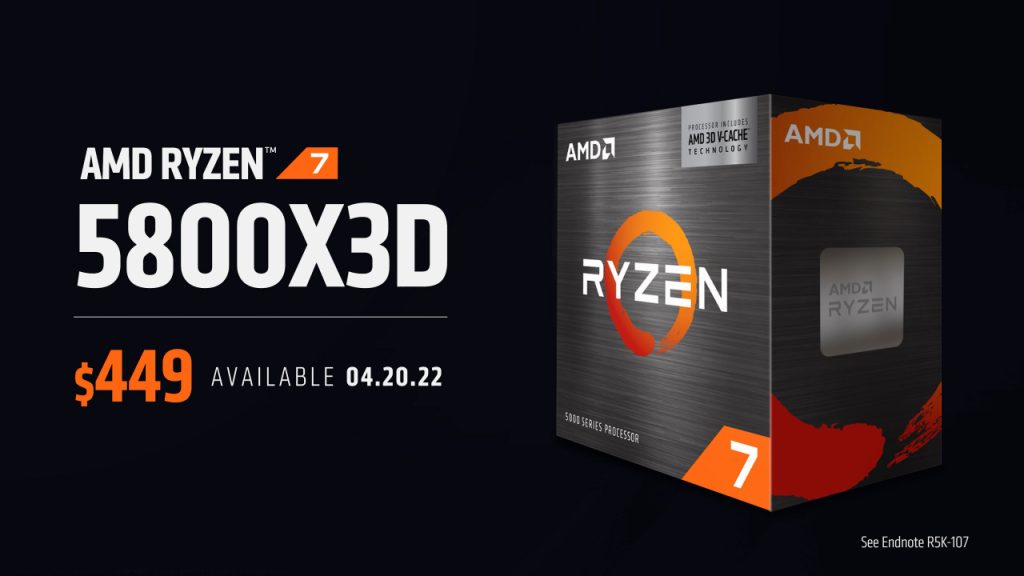On April 20, AMD’s first consumer processor with 3D V-Cache technology will be launched, in the form of Ryzen 7 5800X3D. The model is expanded in the form of a 64 MB L3 cache that is stacked vertically on top of the processor cores, which will provide additional gaming performance and take the “Alder Lake” family from Intel. Shortly before the launch date was revealed, information about overclocking capabilities was sought, as it was mentioned Basically it does not exist.
AMD now confirms that traditional overclocking is limited. In a live broadcast hosted by Hothardware, AMD’s Robert Hallock explains why the company chose to limit overclocking support to the Ryzen 7 5800X3D. As we previously suspected, the limitation is directly related to AMD’s new 3D V-Cache, since the additional stacked circuit on top of the processor cores doesn’t handle higher voltages like the rest of the processor. The effect of this is that the entire circuit package is limited by a lower voltage.
According to Hallock, a standard Ryzen processor can handle a voltage of 1.45 to 1.50 volts (V) without any major issues, something that shows up in the Ryzen Master when individual processor cores are boosted. On the other hand, the Ryzen 7 5800X3D has a limit of 1.3 to 1.35 volts. As a result, AMD will disable adjusting the power supply to the processor cores and manually adjusting the clock frequency.
On the other hand, AMD should allow the frequency of the Infinity Fabric and memory controller to be adjusted, which Robert Hallock believes gives the best performance gain over Ryzen processors in overclocking. In other words, the Ryzen 7 5800X3D isn’t entirely limited when it comes to overclocking, though some traditional options are locked in.
Robert Hallock is keen to point out that curbs aren’t something AMD wants to do and aren’t a change in the company’s strategy when it comes to overclocking. For AMD, it is a priority to be able to offer overclocking on Ryzen processors and the limitations in this case should not be related to what the company wants to do in the future. He adds that with the Ryzen 7 5800X3D they want to deliver the best processor they can manufacture, within manufacturing methods that AMD can access today, rather than waiting for the next generation of processors.
In addition to answers about overclocking, Hallock also answers questions about why AMD 3D V-Cache was launched in a processor with only eight cores. According to Hallock, that’s because AMD hasn’t seen any significant performance increase in applications outside of the gaming world. It shows that many games can easily fill the entire cache and then avoid going to the relatively slower working memory when it comes to data being reused in the game, which is often the case.
The secret behind the extra performance is that it gets much lower response time when the processor needs more data, as it must take 12 nanoseconds to retrieve data from the L3 cache, compared to 60-80 nanoseconds from working memory. Besides the much higher bandwidth between the processor and the L3 cache, compared to the working memory, it’s easy to see how the extra cache contributes to increased performance in games.

“Entrepreneur. Freelance introvert. Creator. Passionate reader. Certified beer ninja. Food nerd.”







More Stories
Logitech Steering Wheel News: New Steering Wheels, Gear Lever, and Handbrake in Direct Drive Series
Garmin Launches inReach Messenger Plus App
Why Rare Earth Metals for Electric Cars Are Crucial for Modern Mobility